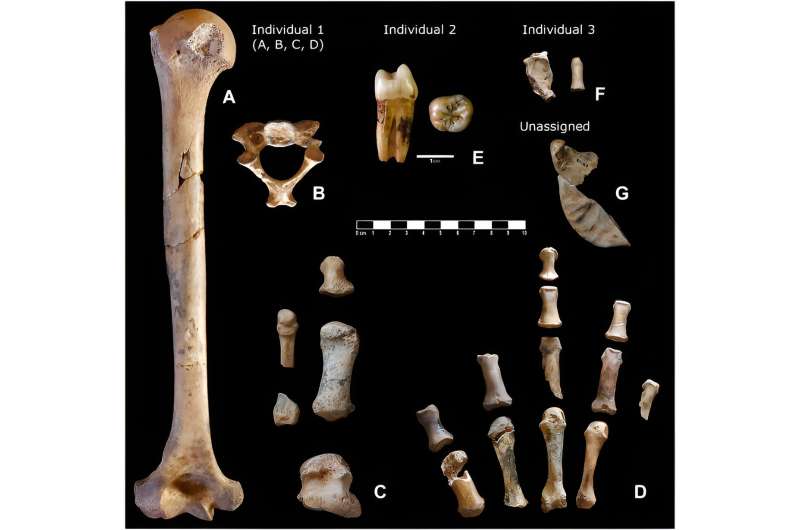September 21, 2023 report
This article has been reviewed according to Science X's editorial process and policies. Editors have highlighted the following attributes while ensuring the content's credibility:
fact-checked
peer-reviewed publication
trusted source
proofread
Box of donated artifacts turns out to be treasure trove of Neanderthal bones

A team of historians, paleontologists and biologists affiliated with institutions across Spain has discovered that a box of artifacts donated to a museum in Spain back in 1986 contained a treasure trove of Neanderthal bones. In their paper published in the journal Frontiers in Earth Science, the group describes the history of the bones, how they turned up at a museum and what the group has learned about the objects so far.
Back in the late 1970s, amateur paleontologist Miguel Aznar uncovered a vast assortment of artifacts and bones outside of a cave called Cova Simanya, which is located in a park just outside of Barcelona. Aznar cleaned the materials and gave them a cursory inspection and then dumped them all together in a box. He then put them in a storage bin at his home, where they stayed until 1986; the year he donated the box to the Archaeology Museum of Catalonia, where it sat unexplored until 2020.
After finally opening the box, the research team found that in addition to pottery fragments and other artifacts, the box also held animal bones and 53 Neanderthal bones. Study of the bones has revealed that they all belonged to just three individuals; an adult, probably a woman, a child, probably aged 11 or 12 years old at the time of death and another young child, which the team estimates to have been 7 to 8 years old at their time of death.
The bones have been dated back to approximately 50,000 years ago. The researchers are still in the process of attempting to retrieve DNA from the bones to learn more about them and find out if the individuals they represent were related.
To more accurately place the original location of the bones from the box, the researchers went to the mouth of the cave as described by Aznar and looked for more of them. In so doing, they found a wisdom tooth that had once belonged to one of the individuals whose bones were found in the box. That allowed the research team to definitively tie the rest of the bones in the box to the same dig site.
The research team notes that the bone collection also represents the most significant discovery of Neanderthal bones in the region, and perhaps the entire Iberian Peninsula.
More information: Juan I. Morales et al, A new assemblage of late Neanderthal remains from Cova Simanya (NE Iberia), Frontiers in Earth Science (2023). DOI: 10.3389/feart.2023.1230707
Journal information: Frontiers in Earth Science
© 2023 Science X Network





















